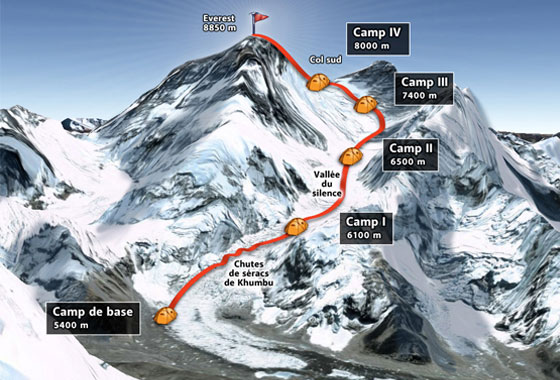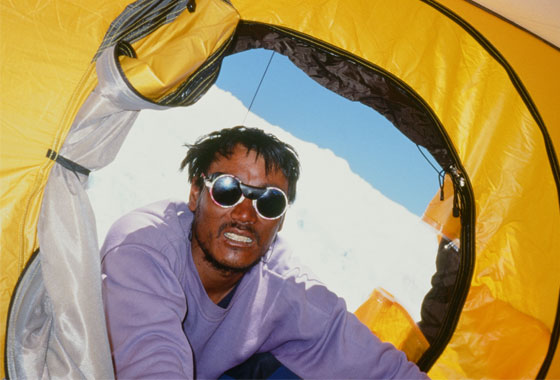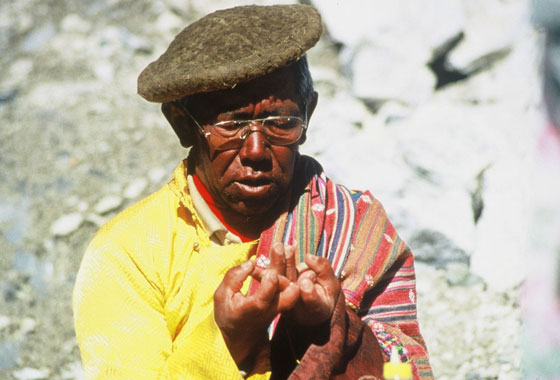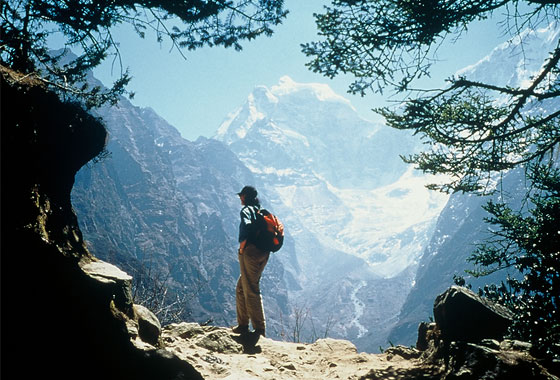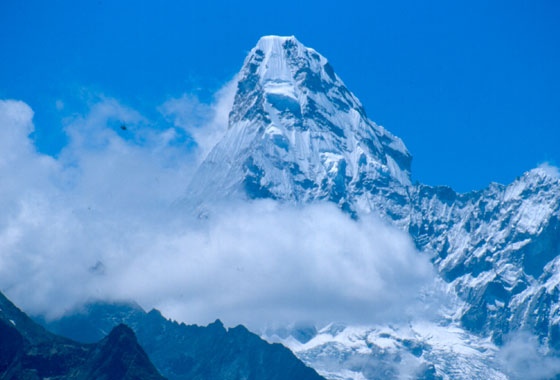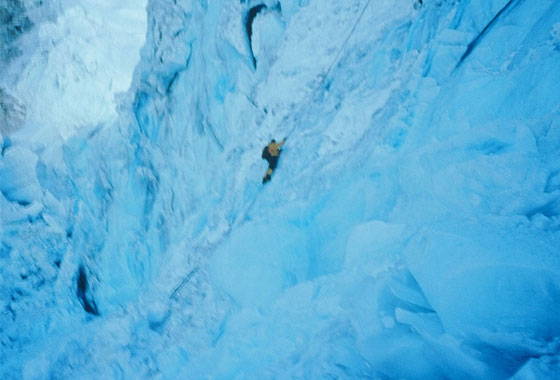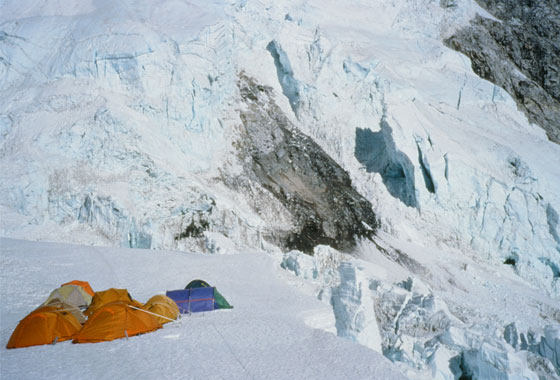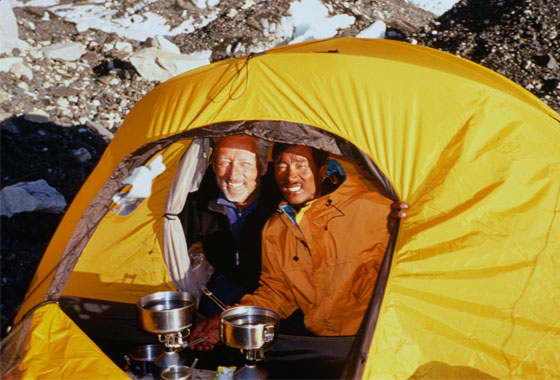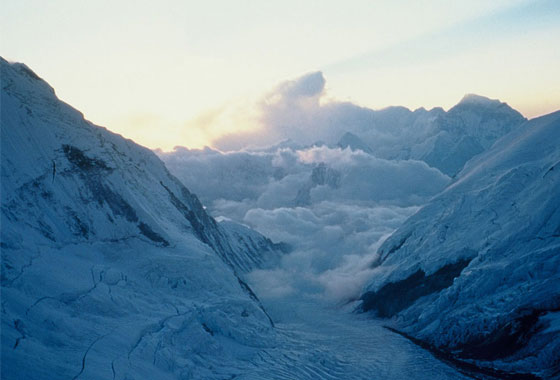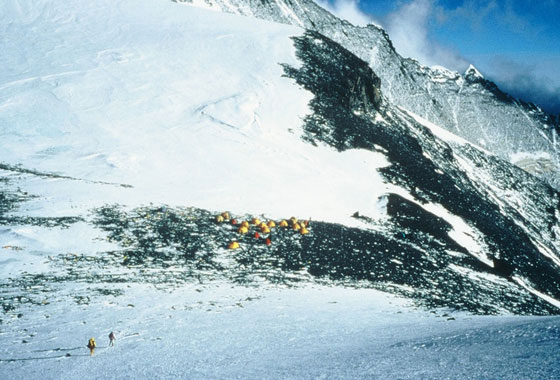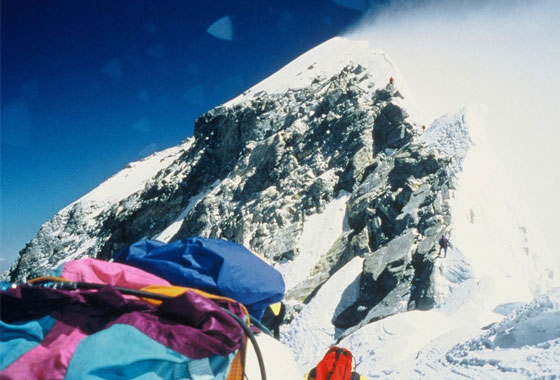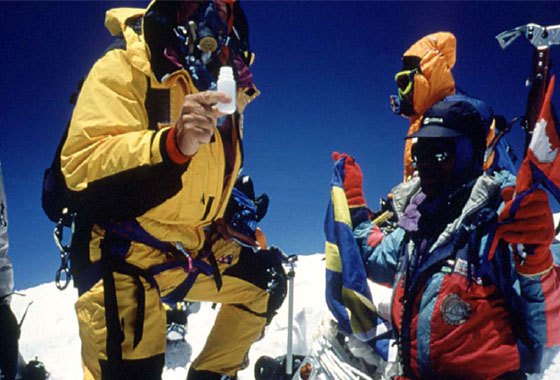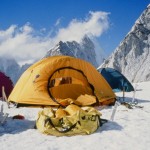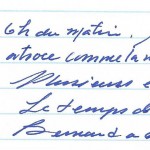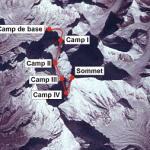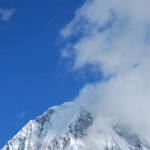I removed my gloves so I could touch the sky. Along with the Poles, no other place on Earth is more symbolic. Pushing the limits of what is humanly possible, Everest was and remains a huge challenge. Very few humans have managed to cast their shadow on its summit.
Expedition
Bernard Voyer stood at the North Pole in 1994 and the South Pole in 1996, and has now reached the third pole as well, the summit of the highest mountain on Earth, Mount Everest (29,035 ft), on May 5, 1999.
He was accompanied by his climbing companion Dorjee Sherpa Fulelee and Chwangba Nuru Sherpa. Just a small team, but a great success! Nathalie Tremblay co-ordinated the expedition from the base camp.
After setting foot on the summit of Everest, Bernard was invited to sign the prestigious “Everest Summiters Club” board in Kathmandu. Bernard’s and Dorjee‘s signatures are now inscribed next to those of Hillary, Rob Hall, Messner…
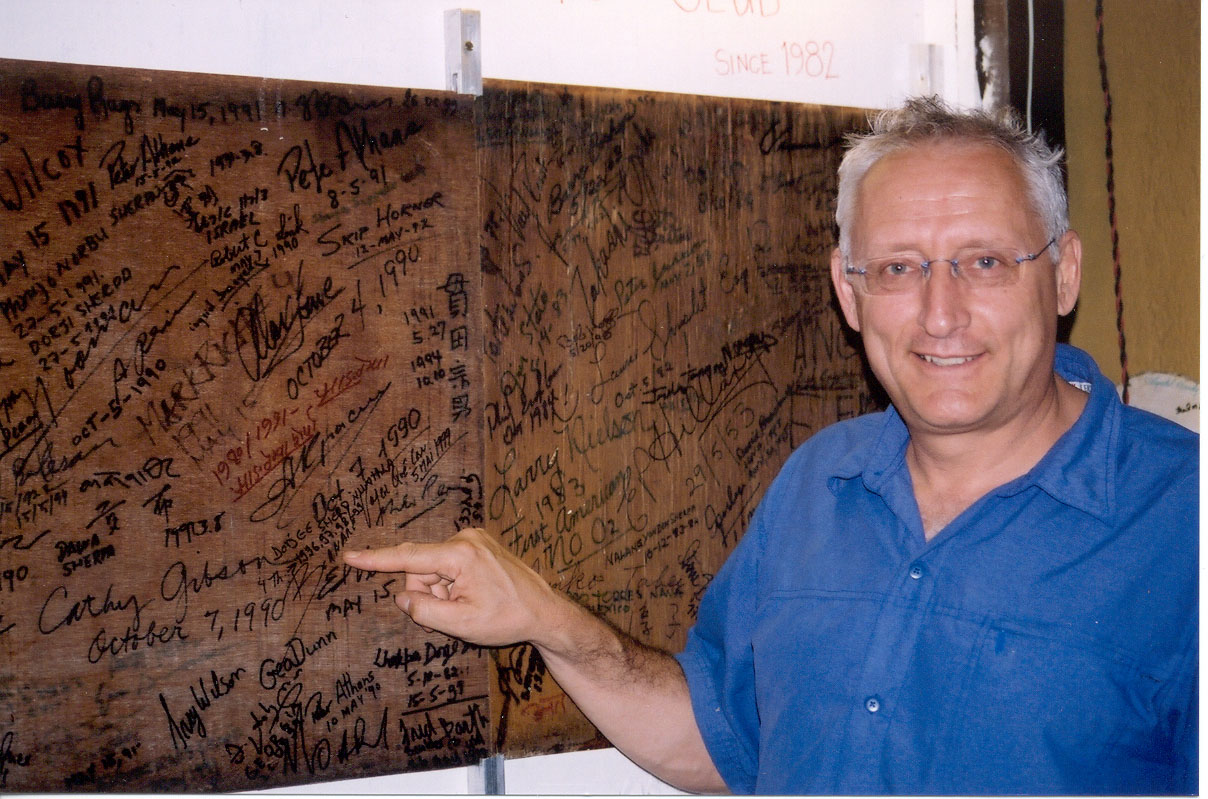
Facts and figures
- Elevation: 29,035 ft – 8 850m (the highest mountain in the world).
- Named after Colonel George Everest (1790-1866).
- May 29, 1953: New Zealander Sir Edmund Hillary, 33, born on 1919/07/20, and Sherpa Tenzing were the first to reach the “Roof of the World.”
- 2003, the 50th anniversary of the 1st ascent of Mount Everest.
- 16 mai 1975 Junko Tabei fut la première femme à atteindre le sommet.
- On May 16, 1975 Junko Tabei was the first woman to reach the summit.
- May 15, 1991, 1stQuebecker to climb Everest: Yves Laforêt.
- May 5, 1999, 2nd: Bernard Voyer. Arrived at 12:10 p.m. from Nepal, spent 40 minutes at the summit.
- 14 mountains are higher than 8 000m and all are located in the Himalayas.
- Everest base camp: 5 400m

